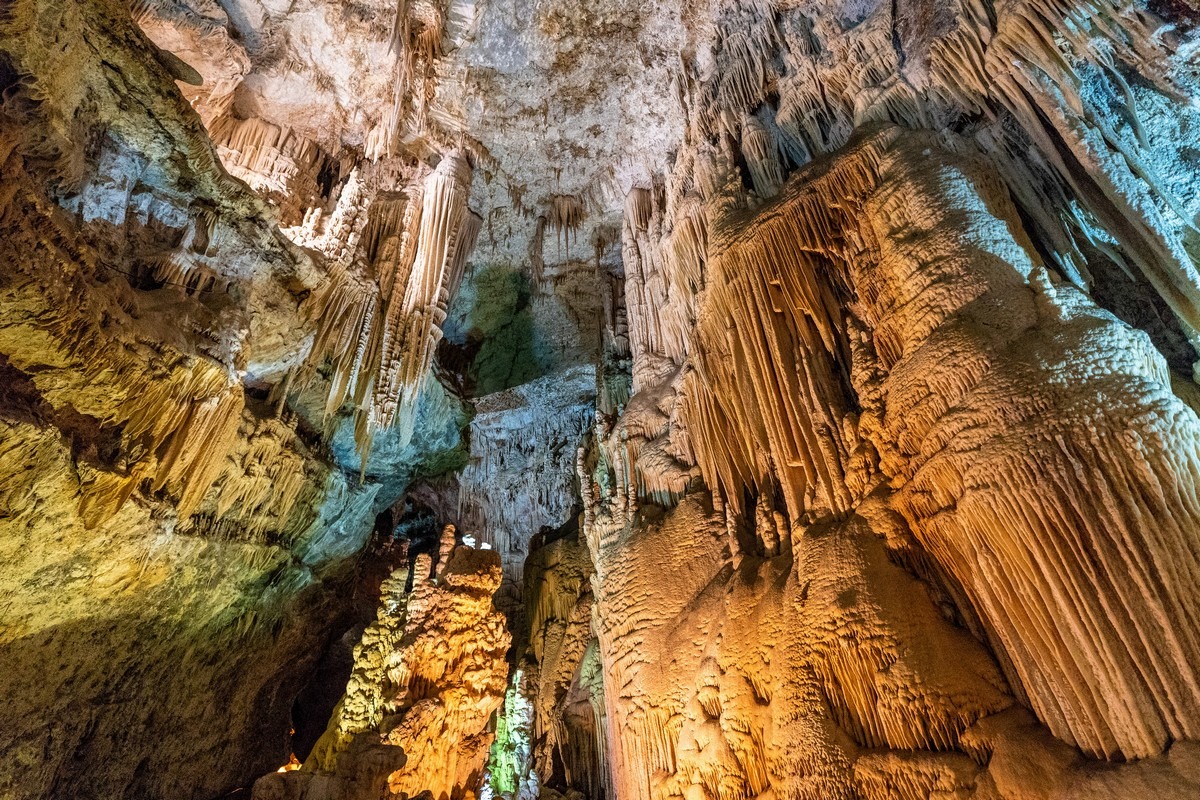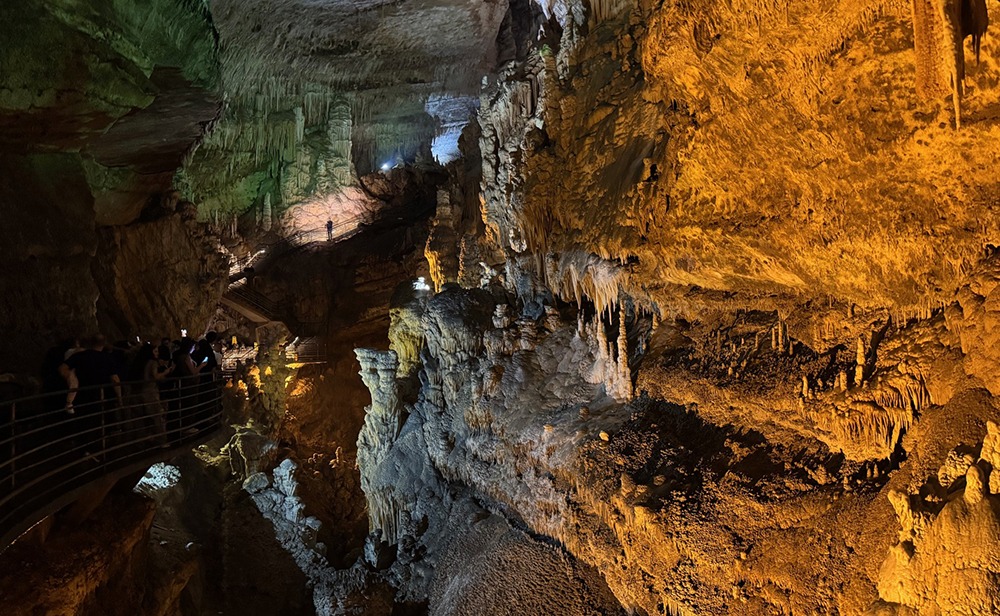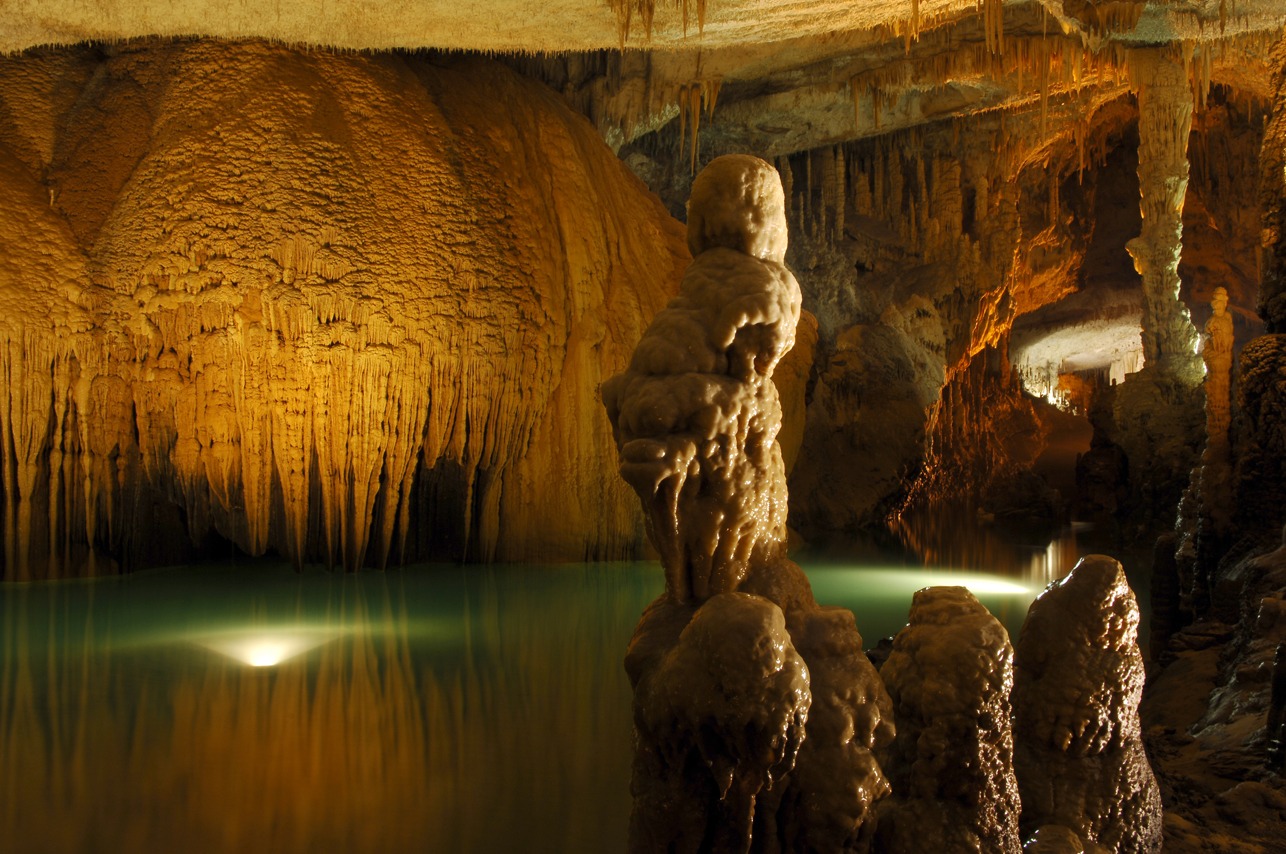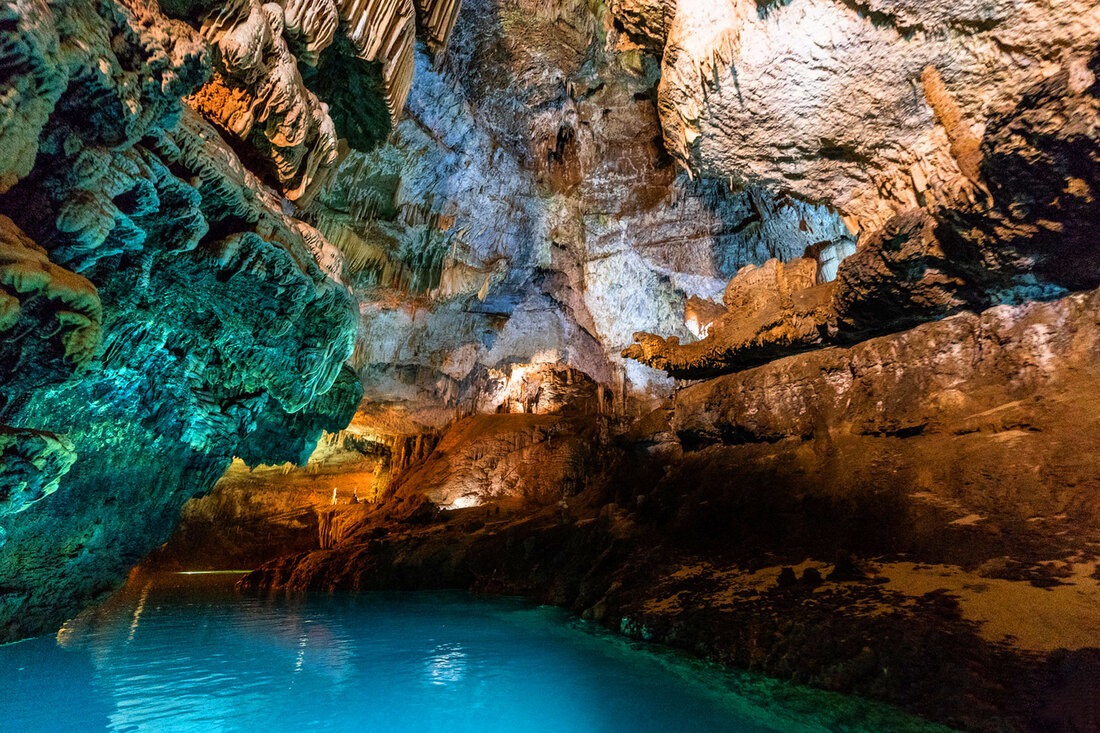Jeita Grotto is one of Lebanon’s most breathtaking natural sites. Located just 18 kilometers north of Beirut, this stunning cave system is a must-visit for locals and tourists alike. After being closed for eight months for maintenance and preservation, the grotto is finally open again ready to dazzle visitors with its extraordinary beauty.
Two magical caves to discover
Jeita Grotto is made up of two connected limestone caves: the lower grotto and the upper grotto. The lower grotto was discovered in 1836 by Reverend William Thomson. It can only be accessed by boat, as it features a calm underground river. As you glide silently through the cave, you’re surrounded by otherworldly rock formations created by nature over millions of years.

The upper grotto, discovered in 1958, sits 60 meters above the lower cave and is accessed via a tunnel and a safe walkway. Inside, visitors can walk through enormous chambers filled with dramatic stalactites and stalagmites. One of the most striking features is an 8.2-meter-long stalactite, which is considered the longest known in the world. Carefully designed lighting highlights the natural beauty of the formations without harming the environment.
A site of national pride
Jeita Grotto is much more than a tourist attraction. It is a symbol of Lebanese heritage, resilience and natural wonder. The site was once a finalist in the New 7 Wonders of Nature competition and has received multiple international awards for sustainability and conservation. Its importance goes beyond tourism. The grotto plays a vital role in Lebanon’s water supply and its protection is critical for the health of the surrounding ecosystem.
A journey through history and culture
The caves have a rich history. While there’s evidence of prehistoric habitation, it wasn’t until the 19th and 20th centuries that explorers and speleologists began fully mapping the grotto’s chambers. Over time, Jeita became a place not only for exploration but also for cultural events. The natural acoustics of the upper gallery have made it an enchanting setting for concerts and artistic performances. One of the most memorable events was a concert by German composer Karlheinz Stockhausen in 1969, followed decades later by a performance from Lebanese-Armenian pianist Guy Manoukian. These moments show that Jeita is not just a geological marvel it’s also a space where art, nature and culture come together.

Jeita Grotto Lebanon
Important tips for visitors
The Jeita Grotto is open from Tuesday to Sunday. Photography and video are not allowed inside the caves to help preserve the delicate formations. The temperature inside remains cool throughout the year, so bringing a light jacket is recommended.
Thanks to its close location and well-planned infrastructure, Jeita Grotto is an ideal day trip from Beirut. A cable car takes you from the entrance to the upper galleries, offering beautiful views of the surrounding landscape. There’s also a mini train, lush gardens, a souvenir shop and a small museum showcasing Lebanon’s natural history.
The experience combines adventure, relaxation and education, making it perfect for families, school groups and nature lovers alike.
Boat rides in the lower cave may be suspended during the rainy season when water levels rise, but the upper galleries remain open and equally magical.
A return worth celebrating
The recent reopening of Jeita Grotto was celebrated in a special ceremony under the patronage of the Ministry of Tourism and the Municipality of Jeita. It marked not only the return of one of Lebanon’s top natural destinations but also a hopeful moment for the country’s tourism sector. In a time when Lebanon is seeking renewal and connection with its roots, Jeita Grotto stands as a reminder of the land’s enduring beauty and promise.
Whether it’s your first visit or a return to relive the magic, Jeita Grotto will leave you in awe. It’s a place where time, water and stone have created something truly unforgettable.
————————————————————————————————————————————-
If you enjoyed reading this check out our Google Maps for more natural wonders and historic sites.
Loading



